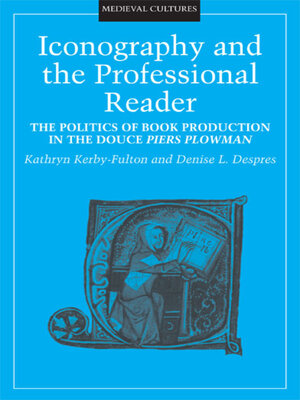
Sign up to save your library
With an OverDrive account, you can save your favorite libraries for at-a-glance information about availability. Find out more about OverDrive accounts.
Find this title in Libby, the library reading app by OverDrive.



Search for a digital library with this title
Title found at these libraries:
| Library Name | Distance |
|---|---|
| Loading... |
Oxford Bodleian Library Douce 104 is the only extant manuscript of William Langland's fourteenth- century poem Piers Plowman that is both illustrated and annotated, thereby providing material evidence of interpretation by professional readers-the artists, scribes, and annotators who constructed the work's meaning in an early fifteenth-century Anglo-Irish colonial context. Kathryn Kerby-Fulton and Denise L. Despres examine this evidence for what it can tell us about the politics of late-medieval manuscript preparation and the scholarly direction of manuscript use. Kerby-Fulton and Despres reconstruct, in vital detail, the lineaments of the community of professional readers and the pressures that produced it. And they show us the roles played by the manuscript's production team-scribe, illustrator, annotator, rubricator, and even an elusive commissioning patron-as all involved in the act of reading and interpreting: a picture that brings to life the ideologies and rivalries that affected bookshop practices. At the center of this picture is the Anglo-Irish scribal-illustrator of Douce 104, probably a clerk with Exchequer training working in the Dublin-Pale region of colonial Ireland. The authors reflect on the ways in which his experience with utility-grade legal, devotional, historical, and religious manuscripts, as well as the illustrated works of Giraldus Cambrensis and a fragmentary Anglo-Irish tradition, influenced his iconographic program and presentation of visionary experience. A study of great significance for medieval scholars, Iconography and the Professional Reader forcefully argues the importance of professional readers and utility-grade manuscripts in comprehending the meditative, mnemonic, performative, and subversive nature of late-medieval reading. Medieval Cultures Series, volume 15







